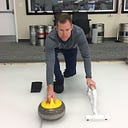Dashboards Aren’t the Answer
I wrote this post over three years ago, but it’s still as relevant as ever. It’s taken time for the industry to start embracing narrative as a alternative (or addition) to visualizations to communicate insights from data, but we are starting to see significant traction with Wordsmith. We now have a self-service offering that enables anyone to incorporate high quality automated content into their solution.
The technology in the natural language generation (NLG) space is evolving very quickly. Three years from now, NLG will be a standard component of every business intelligence offering. It will be fun to watch!
Posted January 7, 2013
Over the past few weeks I’ve read several blog posts about the current problems with data analysis and the methods for communicating analysis. Scott Brave wrote about the need to make Big Data easier to use. Tim O'Reilly hits on a related point. They are right that the answer isn’t more Data Scientists. It’s also not more Data Analysts and it’s not bigger and better dashboards. The answer is automated analysis.
What’s Wrong with Dashboards?
Dashboards are one of the most common tools to help decipher insights hidden in Big Data. Using a combination of visualizations, infographics and tabular data, dashboards are relatively easy for analytics companies to program and productize. The problem with dashboards is that they don’t directly provide insights or deliver knowledge about the data. Even worse, most visualizations require the user go through the mental exercise of interpreting the results. Unless the user knows something about the way a visualization is constructed, (e.g., X-axis, Y-axis, units, scale, etc.), the results can be difficult to understand. For a segment of your audience (arguably a small segment), requiring this level of analysis and interpretation is probably ok. However, this also means many users will be excluded from being able to get anything meaningful from the data (I refer to this group as data novices.)
Why Dashboards Don’t Cut It
Dashboards have become the de facto tool for data analysis because to date there hasn’t been an option for automating the written analysis that most organizations need. Why is the data important? Why is it relevant? What actions should I take? That job is usually left to Data Analysts and Data Scientists.
Big Data conferences like Strata and Structure typically have numerous panels and keynotes focused on the topic of making better visualizations and dashboards. But optimizing a tool that doesn’t solve the analysis problem is just wasting effort. Big Data is only useful insomuch as you are able to disseminate insights and knowledge about the data. Restricting the results to the most advanced group of users (those that have the time and energy to explore a dashboard) means that the potential utility of Big Data will never be fully realized.
A Picture is Worth Too Many Words
It’s true that a picture is worth 1,000 words, but that’s the problem with dashboards. They are filled with so many “pictures” that the readers have to derive thousands of potential insights on their own.
Take this relatively simple sales-based dashboard:
What does it tell you? There’s a lot going on. After spending a few minutes sifting through the charts and graphs, I came up with the following potential insights:
- Revenue YTD reached $32.2M in Q4 exceeding target by 7%
- For a second consecutive year, North America led all regions in bookings despite Canada underperforming in Q3 and Q4
- EMEA continues to grow with the UK leading in both bookings in Q4 and overall growth rate throughout the calendar year.
- Holland was a strong performer in Q4 beating target by 25%.
- Africa, France, Italy, Sweden and Russia all underperformed in Q4.
I’m sure there are other insights that could be inferred, but ultimately most users of the dashboard (Data Analysts aside) are trying to decode the charts and graphs into the 4 or 5 bullets I listed above. Why not just provide the bullets? Better yet, the business processes can also be baked into the algorithms so the narrative can be actionable and even predictive.
The Future is Automated Insights
We get inquiries every week from organizations that are looking for something beyond dashboards. Emailing around spreadsheets and trying to decipher dashboards just aren’t cutting it. Whether it’s a junior sales person or the CEO, taking automated data analysis to the next level is long overdue. Our platform enables just that. We’re able to convert just about any kind of data into a narrative that keeps the reader engaged and provides actionable insights. You just can’t get that with a visualization.
Ideally, you combine both narratives with visualizations to create a solution that works for both the data expert and the data novice, and that’s what we typically do. Use narrative to communicate the important insights and use visualizations as a complementary content element that allows the reader to dig deeper into the data.
Contact us to explore how we can help you remove the Dashboard bloat inside your organization.
Originally published at automatedinsights.com.
